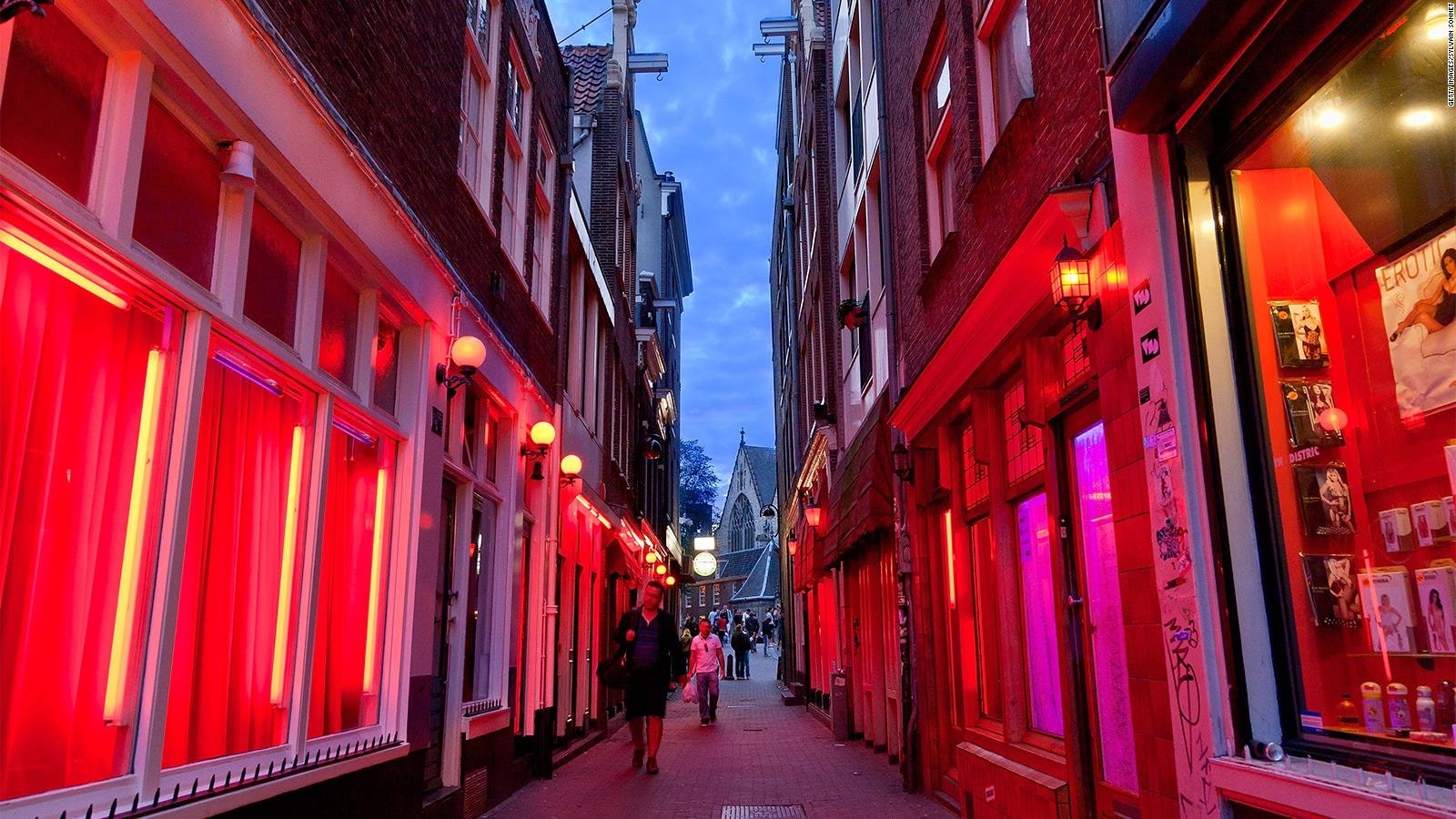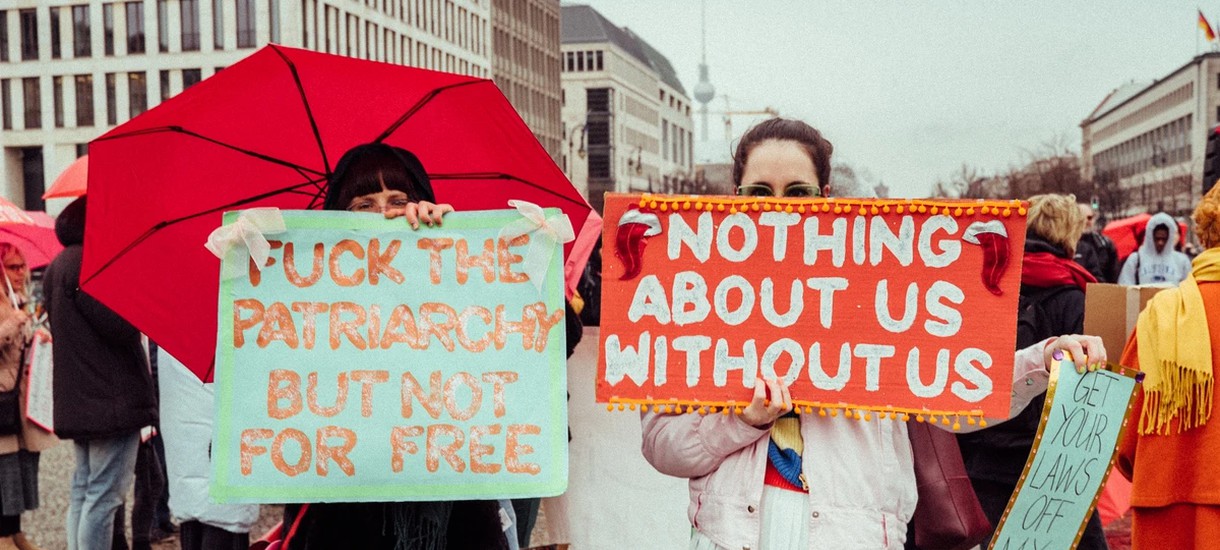The debate about how the state should regulate sex work seems to be everlasting. Some feminists strongly insist on the need for regulation, while others point out an inherent ethical contradiction: “How can one be a feminist and opt to legalize a trade that harms the very selfhood of a ‘worker’?” The two sides are forever batting arguments and curses back and forth, often causing friendships to break apart and collaborations to come to an end.
But who is right, and which model is better? There is no simple answer. Let us leave the moralizing aside – after all, there are a variety of compelling arguments in favor of both sides. Personally, I find both of these ethical narratives attractive and repulsive at the same time. It would of course be better if there were fewer women engaged in sex work, but it would be great if those who do, had access to all benefits of the welfare state, especially protection from physical violence. But what should the ultimate goal be?
Even If I aimed to, I would not be able to draw any clear conclusions in this essay, because we often lack empirical data. One thing is for sure: both models have had unintended consequences when implemented. This makes me believe that, unlike conceptual systems developed by feminists, solutions focused on laws are “both worse.” Moreover, they both are poorly suited to be transferred to countries outside the Western world[1].
The two competing models of sex work regulation
This section explains the ethical/legal constructs regarding sex work that I talk about in the rest of the piece. If you're already familiar with the two ends of the sex work regulation debate, feel free to skip the section.
The two models most often contrasted are the abolitionist and the regulatory one. The first involves the criminalization of clients, whereas the second puts prostitution and brothels under state regulation. There is also the prohibitionist model, under which both women and pimps are to be punished, but not necessarily clients. This model is not accepted within feminist discourse, so I will not discuss it.
Sweden and the Netherlands are most often provided as examples when it comes to discussing the models. Sweden became one of the first countries to implement the abolitionist model in 1999. A similar model is also used in Martinique, Norway, Belize, Canada, Iceland, Ireland, and Northern Ireland. In the Netherlands, the law concerning sex work was changed at about the same time, between 1997 and 2000. Sex work was legalized and brothels were subjected to state supervision (McBride, Mazur 2010).

The two legislative models are guided by two different ethical imperatives. The regulatory model claims that we ought to improve the working conditions of women. Its supporters believe that sex work is no different than other forms of hazardous work, such as working in a toxic chemical environment. To improve working conditions, the ‘occupation’ should be taken under state regulation in order to provide women with social guarantees and the right to unionize.
The abolitionist model is grounded in the belief that prostitution is by no means work and should not be considered as such. It is because they believe that it cannot be done freely and consensually. On the contrary, it should be banished. Whether it can be done or not is out of question (however, the question is purely theoretical). The very act of prostitution subjects women to violence, and violence is unacceptable. If prostitution is tolerated, it will hinder gender equality. Since the criminalization of all agents involved (clients, pimps, and prostitutes) has not proven effective in reducing prostitution, it is better try and punish the clients, and not the women who are themselves victims.

There is no clear line between the supporters of these two models: it is not that all left feminists stand for one model, and all liberal feminists stand for the other one. There are advocates of different ideologies and branches of feminism on each side. However, they use different arguments to justify the advantages of each model.
If you are interested to know more on the topic, consider looking at the work of Jacqueline Comte (2014). This discussion will be more focused on outcomes than the ethical systems of the issue.
Hodgepodge of outcomes
Whereas there are many academic articles on the ethical disputes, there are only few on the empirical outcomes of the legal changes. We know especially little about Sweden (Desbuleux-Rettel 2019, Holmström & Skilbrei 2017). It is therefore difficult to compare the two models in terms of outcomes, but I will still try based on these few scientific studies that I have found. I will analyze what each of the reforms has led to, starting with the Netherlands.
With the implementation of sex work legalization in the Netherlands, there has been an influx of foreign female sex workers into the country, especially since the EU expanded to the East to include Bulgaria and Romania. Immediately after the accession of Bulgaria and Romania, the number of brothels operating in the Netherlands saw a sharp increase. The more the Netherlands became known as a country of legal prostitution, the more sex tourists arrived; the more tourists, the higher the demand. Fourteen years after the reform was introduced, sex businesses were present in 40% of the country’s municipalities, with a total of 833 brothels operating at the time. The amount of illegal prostitution has also increased, since newcomers oftentimes don’t have enough money to pay for the medical check-up needed to get a licence. There is also a semi-legal way of selling sex: many brothels in the country are not registred, and the women who work there are self-employed on paper, but in fact they are employed by the brothel.

In disputes over the regulation of sex work, the question of sex trafficking often comes up, and stats are used as an argument for and against one model or the other. If a given model shows a decreased number of women forced into sex work, it means that the model is “better.” Jacobsson and Kotsadam, well-known researchers in the field, argue that countries where sex work is legal may in fact create a larger market for human trafficking. But can one rely on statistics here?
Sociologists, no matter how hard they try, cannot accurately measure shadow trafficking. They can only rely on registered appeals, and those depend on the NGOs and institutions that are authorized to record them (How many of them are there? How available are they to women?). Some of these statistics include women who come voluntarily but are later held forcibly, and some don’t (de Vries & Farrell 2019). So, different approaches give different numbers. Women trafficked in this way may ‘serve’ up to 30 clients per day and are often physically abused, and their pimps often forbid them to leave and threaten to report their illegal status to the police (just to remind: since sex work is legal, I am referring here to the migration status).
What about the women who sell sex legally? Let's have a look at Amsterdam, the city known for its red light district. The country, and the city in particular, tries to maintain a libertine image, while avoiding the ‘dark sides’ associated with it. This happens through peddling the ‘narrative of freedom’ in the media, and curtailing its real life manifestations. For instance, only a handful of people are aware that renting a shop window in the red-light district is becoming increasingly expensive. Under the pressure of gentrification, rents are getting higher, but the wages of sex workers trail behind. The city council buys out premises from brothels and places restaurants and souvenir shops there instead. As a result, selling sex in the city center has become unprofitable: women often have to spend almost all their earnings to cover the rent. This pushes the women further from the city center, where the rent is not as high. Allegedly, the city does this because prostitution goes hand in hand with violence and substance abuse, and the local administration doesn’t want to be known for such sordid affairs.
But working in the city center is highly advantageous to sex workers, and it is here where the legal regime has failed: the clients who buy sex in the city center are usually richer, younger, and, perhaps, safer to deal with. They are often tourists. "[In the city center] I can choose in between several clients, so I don't sleep with men over forty," said Felicia Anna, a sex worker from Romania, to a Pulitzer Center journalist. However, due to high rent, only those who are younger and stereotypically more attractive can afford doing ‘business’ in the center. All those who don’t belong to this category move further away, and therefore their clients are less well off and less safe.

There are ‘red lights’ left in Amsterdam, but women are less and less visible there.
When it comes to Sweden, there is almost no academic research on sex work in the country, but statements by supporters of the so-called Nordic model abound. For instance, they claim that “the number of women in the sex industry has not increased since the legislation was enacted” and “no sex workers have been killed ever since,” but most of these statements lack backing in data. Unlike in the Netherlands, we cannot deduce anything from the governmental statistics, since because of the sex trade’s existence in the shadows, no fundamental government studies exist. After exhaustive research, I found an overview article of academic literature and state / NGO reports on the consequences of the implementation of the The Swedish Sex Purchase Act.
In this overview study, only 29 relevant sources were identified. The conclusions made in the research depend heavily on its design and methodology – using different methods, which will be discussed further, one can get opposite results. What is the methodology then, is it that bad? Well, just walking along the streets and measuring the number of visible prostitution, obviously, does not pass. To not see sex workers and to say that prostitution has decreased in number would be wrong, one can only claim that there is less sex work in the city public space. But we must also take into account sex work offered online. Unfortunately, it is difficult to estimate the number of women behind Internet ads. It may be possible to do so for some particular community under study, but the results will not be characteristic of the whole country.
Another way to measure prostitution is to rely on surveys of the country’s male population to see how many men had bought sex before and after the Act came into force. Such surveys were conducted by Månsson (1998) and Kuosmanen (2008). In 1996, 13% of the male population had ever bought sex in Sweden, and in a 2008 study the number had gone down to 8%. However men surveyed in 2008 could have been ashamed or afraid to tell the truth because the situation had changed, and their actions had become illegal by the time of the second survey. The conclusions we draw from this data will depend on whether we consider anonymity of the survey to be sufficient for the respondents to tell the truth.

The Soviet model of the 1920s is ideologically very similar to the Swedish one.
One of the objectives of the Act was to ease the conditions of women and to shift the stigma of prostitution towards male clients. Research shows this has not been fully achieved. What has been achieved is greater disapproval of clients among the general public: in 1996, 32% respondents said that clients should be condemned, and in 2012 this number rose to 50% and 80% among men and women respectively (Kuosmanen 2011). But the baby got thrown out along with the bathwater: attitudes towards women who sell sex in society have deteriorated dramatically, and unlike social organizations that see women as highly vulnerable subjects, the general public considers them equally responsible with their clients for the act of sale and purchase of sex, and the stigma of prostitution has grown in value (Kuosmanen 2011). The benefits of the reform are therefore offset by the negative consequences. The state may even cover sick leave for a sex worker, but police will treat such women with greater contempt (Hulusjö 2008, Levy 2014).
Hence, women are afraid to deal with authorities, to sue clients in court if needed, because they believe that their children may be taken away from them due to their marginal status (there have been such cases). For the same reason, the women often are afraid to see a doctor about STDs. Another unintended consequence is that in order to seek assistance and resources provided by the state, women have to act as if they were victims, even if they don’t feel this way (Levy 2014, Jakobsson 2014).
Compared to Sweden, the Netherlands has less police violence towards prostituted women and fewer refusals to open court cases when sex workers report rape, while in Sweden it is not uncommon for survivors to hear that "you are a prostitute, you cannot be raped, you get paid for it" (Hulusjö 2008). One study found that in countries where the client is criminalized, stigma is higher compared to places where the legalization approach is used (Immordino & Russo 2015). At the same time, in the Netherlands sex worker stigmatization has not died down either: for example, if sex workers claim their source of income, they find it difficult to get a housing loan, even though it is legal (Verhoeven & Gestel 2017).
It is possible in Sweden to threaten to call the police on a client if they behave badly or do not pay (although this would require obtaining their personal information beforehand). However, even this ability does not provide a great deal of benefit: in fact, only a few hundred clients have been convicted since the Act was introduced (last year, only 50 people were prosecuted, with even fewer in previous years. In 2012 and 2013, for example, not a single client was put in jail). Some women report they are happy with the presence of social workers on the streets and the possibility of receiving psychotherapy, but in order to apply for it, one has to be willing to face the negative consequences of going public as a sex worker, and not everyone can afford to do so (especially immigrant sex workers).
Two sides of the same coin
Among the apparent effects of the both systems is the removal of prostitution from the visible space of the city. In particular, sex work is increasingly moving away from urban centers and from the street to the internet (this trend is common to most businesses, both legal and illegal). In the Netherlands, this happens because the state buys out the premises of brothels located in the center, and women cannot work on the streets because it is illegal. In Sweden, it has also become very difficult to attract clients on the streets, and prostituted women who wanted to keep their jobs have begun to do so more discreetly, thus moving further from the city center and more online.
If legislation is one cause of the disappearance of sex workers from gentrified city centers, it is definitely not the only one. Both the Swedish Act and the Dutch legalisation were adopted during a period of rapid technological change, so it is likely that the advent of the Internet made it easier and safer to sell sex online rather than on the street. Since websites are outside the visible urban space, even the Swedish police often turn a blind eye to the fact that sex is bought "somewhere else" (The County Administrative Board of Stockholm, 2015).

Red umbrellas are a symbol of the supporters of legalizing sex work. The slogan "Nothing about us without us" is frequently used by sex workers who support legalization. On the side there is a poster that says "Get your laws off my body."
Working over the Internet makes women less reachable to organizations that provide medical and social support to them. Through the Internet, it is almost impossible to reach sex workers if one is not actively seeking to get their services. In both countries, women who kept selling sex on the street now have less chance to choose safer clients, and fewer opportunities to convince clients to adhere to safe sex practices, as fewer clients are seeking services on the street in general. In addition, negotiations on the street have to be quick, so women have little time to evaluate the risks.
Both countries have different social groups involved in sex business who are subject to varying levels of discrimination. In Sweden only local sex workers are seen as victims to be protected, whereas foreign sex workers are seen as a threat. It is not surprising, given that the Swedish Aliens Act requires the police to deport women suspected of "dishonestly obtaining means to support themselves." In the Netherlands, foreign women are more likely to find themselves in the illegal sector, as they often cannot afford to pay the licence fee. Thus, foreign women turn out to be the most vulnerable in both cases.

In the Netherlands, illegal sex work often takes place in rented apartments, such as through AirBnB. Compared to brothels, it is more dangerous in terms of violence for women to work in rented apartments. Brothels have a special "panic" button, which sex workers can use at any time, to bring a security guard to come help. In rented apartments there is no such button, and if violence occurs, the woman has to deal with her assailant on her own. However, rented apartments are not the worst scenario. In Sweden, due to stigmatisation of women involved in sex work, women are often unable to use hotel services or invite their clients to their place, and are thus forced to work at the client's place. This increases the risk of violence (Swedish National Police Board, 2014).
Conclusion
In the sex trade, reliable statistical data often remains beyond reach, since the scope of the shadow sector is almost impossible to measure. Given what we know, we cannot draw any definite conclusions as to which legal approach to sex work is better. Several questions need to be answered before we draw any conclusions: how ought we account for the impact of the Internet, or for the entry of Eastern European countries into the EU? Another context we must consider is accelerating globalization. At the time of the adoption of sex work legislation Sweden and the Netherlands in the late 1990s, there were far fewer opportunities for migration. Now these opportunities have increased, transportation technology has improved, travel has become cheaper and more accessible, and it is now easier to travel from one place to another. It may be that sexual services have also become more global: a woman may work in one country today, tomorrow in another, and sit with her child and parents in her home country the next. Is it right to approach both the current situation and that of the late 1990-s with all the same methodology? If not, what needs to be added to the picture? These questions are yet to be answered.
References:
Abelsson, J. and Hulusjö, A., 2008. Sexualitetens Gränstrakter – en Studie av Ungdomar i Göteborg med Omnejd som Säljer och Byter Sexuella Tjänster [Study on Experience among Youths in the Gothenburg Area with Buying and Exchanging Sexual Services] (Gothenburg).
Agustín, L., 2013. “Prostitution Law and the Death of Whores”. In: Jacobine.
Comte, J., 2014.. "Decriminalization of sex work: Feminist discourses in light of research." Sexuality & Culture 18.1, pp. 196-217.
Desbuleux-Rettel, J., 2019. Prostitution/Sex work in Sweden and Germany: A Study of Former Research.
de Vries, I. and Dettmeijer-Vermeulen, C., 2015, January. Extremely Wanted: Human Trafficking Statistics–what To Do With The Hodgepodge Of Numbers?. In Forum on Crime & Society (Vol. 8).
De Vries, I. and Farrell, A., 2019. Sex Work. The Encyclopedia of Women and Crime, pp.1-8.Edlund, C. and Jakobsson, P., 2014. En Annan Horisont – Sexarbete och HIV/STI-Prevention ur ett Perspektiv (HIV-Sverige, Riksförbundet för hivpositiva and Rose Alliance 2014).
Holmström, C. and Skilbrei, M.L., 2017. The Swedish Sex Purchase Act: Where Does it Stand?. Oslo Law Review, 4(02), pp.82—104.
How Different Legislative Approaches Impact Sex-Workers
Immordino, G. and Russo, F.F., 2015. Laws and stigma: the case of prostitution. European Journal of Law and Economics, 40(2), pp.209-223.
It’s Legal to Sell Sex in Amsterdam, But Don’t Expect the Same Rights As Other Workers,
Kuosmanen, J., 2011. “Attitudes and Perceptions about Legislation Prohibiting the Purchase of Sexual Services in Sweden” . In: European Journal of Social Work 247, 263. DOI: 10.1080/13691451003744341.
Levy, J., 2014. Criminalising the Purchase of Sex, Lessons from Sweden (Routledge). DOI: 10.4324/9781315816708.
Månsson, S.—A., 1996. “Den köpta sexualiteten” [‘The Bought Sexuality’]. In: Bo Lewin.(ed), Sex i Sverige – om sexuallivet i Sverige 1996 [Report: Sex in Sweden 1996] (Folkhälsoinstitutet 1998).
McBride, DE, Mazur, AG., 2010. The politics of state feminism: Innovation in comparative research. Temple University Press.
Scoular, J., 2010. "What's law got to do with it? How and why law matters in the regulation of sex work." In: Journal of law and society 37.1, pp. 12—39.
Swedish National Police Board, Människohandel för sexuella ändamål, Lägesrapport 14 RPS. 2014 [Report: Human Trafficking for Sexual Exploitation, Progress Report] (Swedish National Police Board, Stockholm 2014) 19.
The County Administrative Board of Stockholm Prostitutionen i Sverige 2014, en omfattningskartläggning [Report: Prostitution in Sweden 2014, A Survey] (The County Administrative Board of Stockholm 2015).
It’s Legal to Sell Sex in Amsterdam, But Don’t Expect the Same Rights As Other Workers.
Verhoeven, M. and van Gestel, B., 2017. Between visibility and invisibility: Sex workers and informal services in Amsterdam. Feminist Economics, 23(3), pp.110-133.
Werkman K., 2016. Briefing on legal prostitution in The Netherlands: policies, evaluations, normalisation.
Notes
- ^ My position is rather neutral, but there is no neutral way to denote women in the sex industry. Therefore, I will use both “sex worker” and “prostituted woman” (the former is predominantly used by legalization supporters, the latter – by adherents of client-only criminalization). While there are people of all genders and gender identities who engage in sex work, this article will deal specifically with women sex workers.



